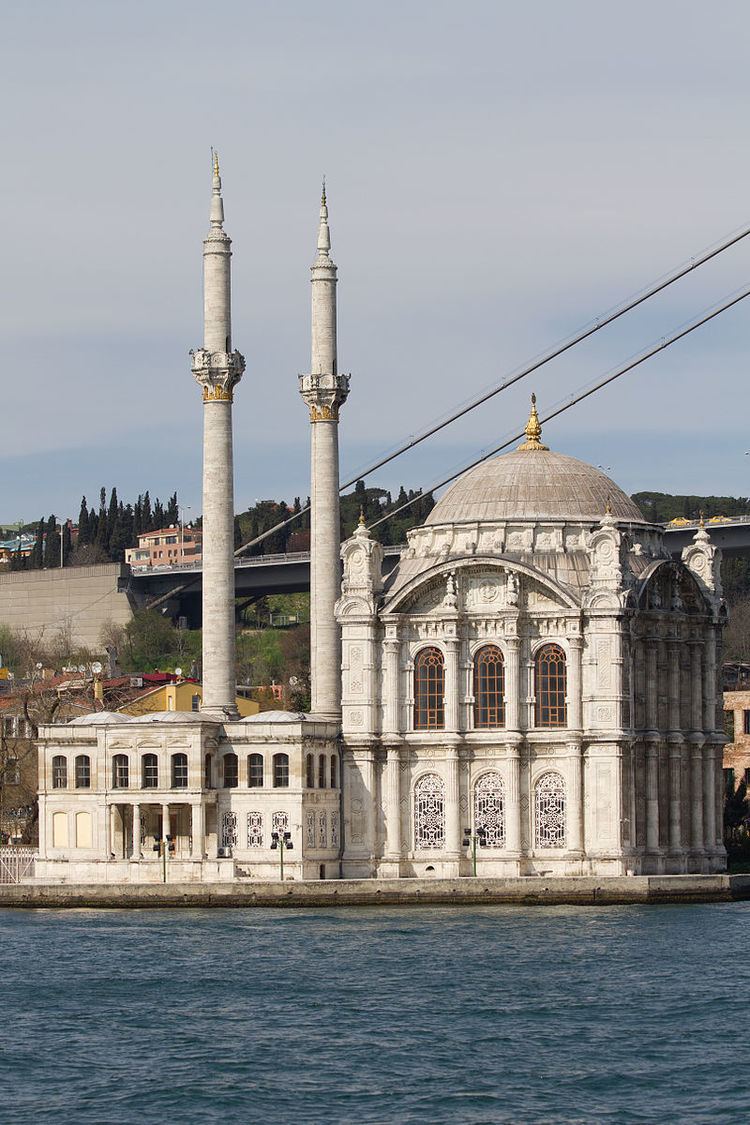Groundbreaking 1853 Opened 1856 Number of minarets 2 | Completed 1856 Architectural type Mosque | |
 | ||
Architectural style Baroque Revival architecture Architects Nigoğayos Balyan, Garabet Balyan Similar Dolmabahçe Palace, Bosphorus, Sultan Ahmed Mosque, Bosphorus Bridge, Süleymaniye Mosque | ||
Inside ortak y mosque
Ortaköy Mosque (Turkish: Ortaköy Camii), officially the Büyük Mecidiye Camii (Grand Imperial Mosque of Sultan Abdülmecid) in Beşiktaş, Istanbul, Turkey, is situated at the waterside of the Ortaköy pier square, one of the most popular locations on the Bosphorus.
Contents
History
On this site, a masjid commissioned by the son-in-law of Vizier Ibrahim Pasha used to stand. Built in 1721, it was ruined during the Patrona Halil Uprising. The current mosque, which was erected in its place, was ordered by the Ottoman sultan Abdülmecid and built between 1854 and 1856, on the ruins of the Cantemir Palace. Its architects were Armenian father and son Garabet Amira Balyan and Nigoğayos Balyan (who also designed the nearby Dolmabahçe Palace and the Dolmabahçe Mosque), who designed it in the Neo-Baroque style.
Features
It consists of a two-story "sultan apartment" which has a "U shaped" plan, a main venue with a square plan which is covered with one dome. The "sliced facades" with mounting columns are "enriched" by carvings as well as relief, giving the mosque a "dynamic appearance". There are two rows of windows providing the main venue a "good illumination".
The mosque is "pint-sized" in comparison to other mosques "on the other side of the golden horn". The mosque was built in Neo-baroque style. In the interior of the mosque, there are wide, "high bay windows" which refract its reflection in water as well as daylight. There are also several panels of calligraphy by Abdülmecid I himself.
